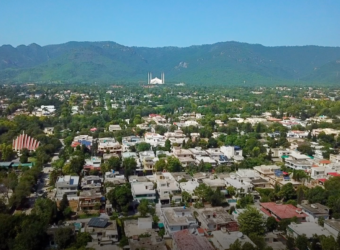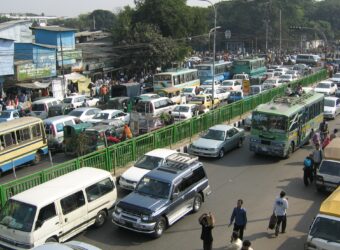GDA AID Urban Sustainability
Thematic overview
More than half the global population live in cities and over 80% of global GDP is generated in cities. Well-planned, compact cities make public spending on infrastructure and services economically viable, and facilitate generation and diffusion of knowledge. However, poorly planned urbanisation leads to environmental destruction, increased carbon emissions, transport congestion, poor air quality, and urban sprawl. GDA AID Urban Sustainability provides satellite Earth Observation information in response to requirements identified by International Financial Institutions and their client governments in developing countries.Urban Sustainability Themes
The thematic cluster will focus on the following global urban themes: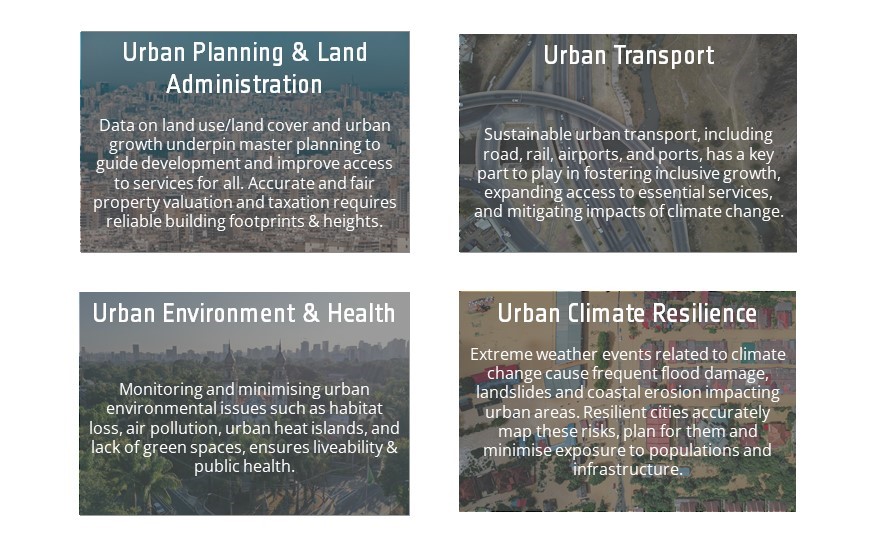 Discover our e-flyer and brochure for more information regarding services and products provided on these themes in response to requirements identified in the urban domain by IFIs and their Client Countries:
Discover our e-flyer and brochure for more information regarding services and products provided on these themes in response to requirements identified in the urban domain by IFIs and their Client Countries:
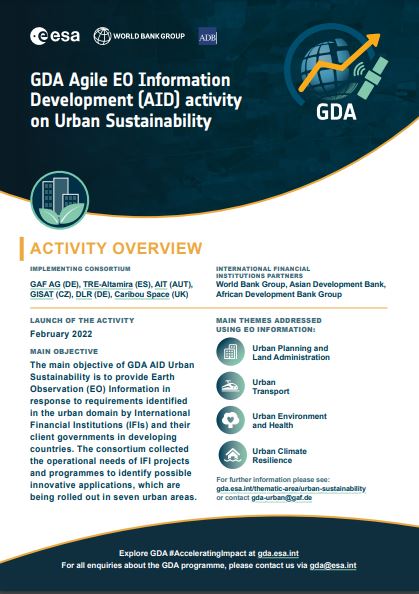
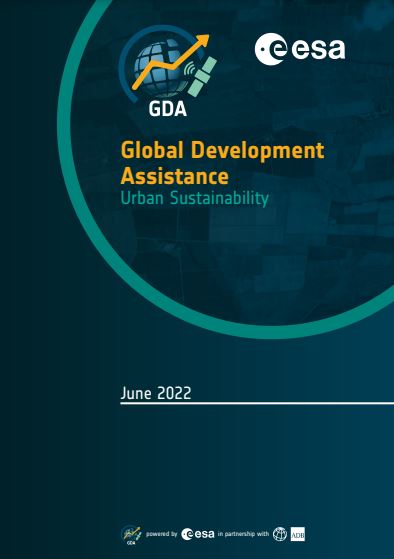
Supported IFI initiatives
- Second Rwanda Urban Development Project (RUDP II) at the World Bank
- Use Case: Urban Wetland Monitoring System to support the implementation of Nature Based Solutions in cities and mitigation of flooding through the semi-automated, stable detection of changes to urban wetland land cover types which are either “natural” or “human-impacted”
- West Africa Coastal Areas Management (WACA) Programme Multi-Sector Resilience Plan (MSRP) for Nigeria at the World Bank
- Use Case: Interactively visualising how weighting input layers (assets, such as population and land uses, and hazards, such as ground displacement and flooding) in an urban exposure analysis affects the spatial distribution of the resulting relative exposure “hotspots” to better prioritise investments
- Urban Resilience and Solid Waste Management Project and WAEMU Affordable Housing Finance Project in Cote d’Ivoire at the World Bank
- Use Case: Scaled service for slum area identification, mapping/monitoring and characterization (including urban indicators support)
- Jordan Sustainable Cities at the World Bank
- Integrated agent-based modelling of urban development scenarios including the potential for NBS solutions to respond to social crises and climate emergencies
- Integrated and Innovative Solutions for More Liveable Cities & Developing Resilient Environments And Municipal Services (DREAMS) in Pakistan at the Asian Development Bank
- Assessing the impact of urban green area provision on liveability and urban resilience through advanced analytics to prioritise green area investments and reduce Urban Heat Island effects
- Updating the Revised Strategic Transport Plan for Dhaka, Bangladesh at the Asian Development Bank
- Use Case: EO-informed macro- and microscopic modelling of urban transport systems
- Integrated Urban Data Platform Application for Urban Centres in Kenya at the African Development Bank
-
- Scalable EO-based urban development datasets and spatial analytics to support the establishment of a national urban data platform for Kenya, with a pilot demonstration in Nairobi
-
Consortium members















